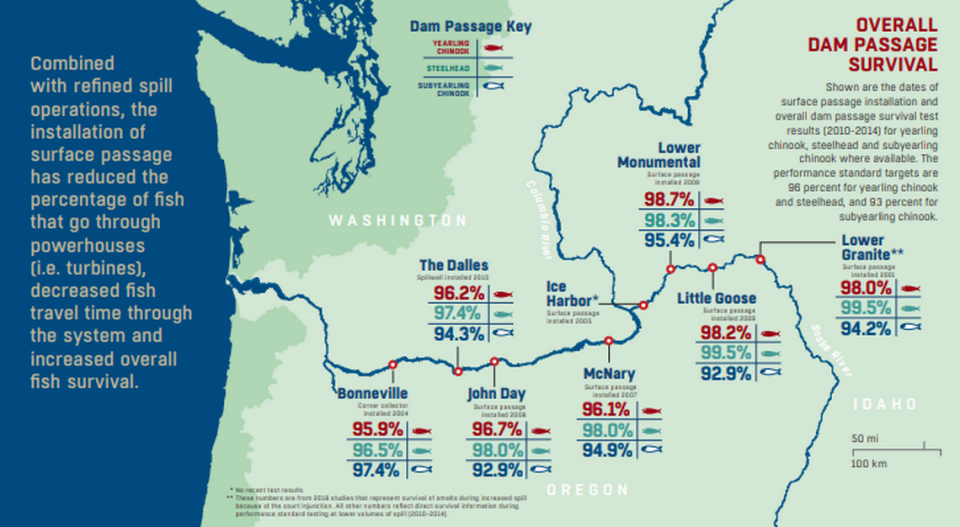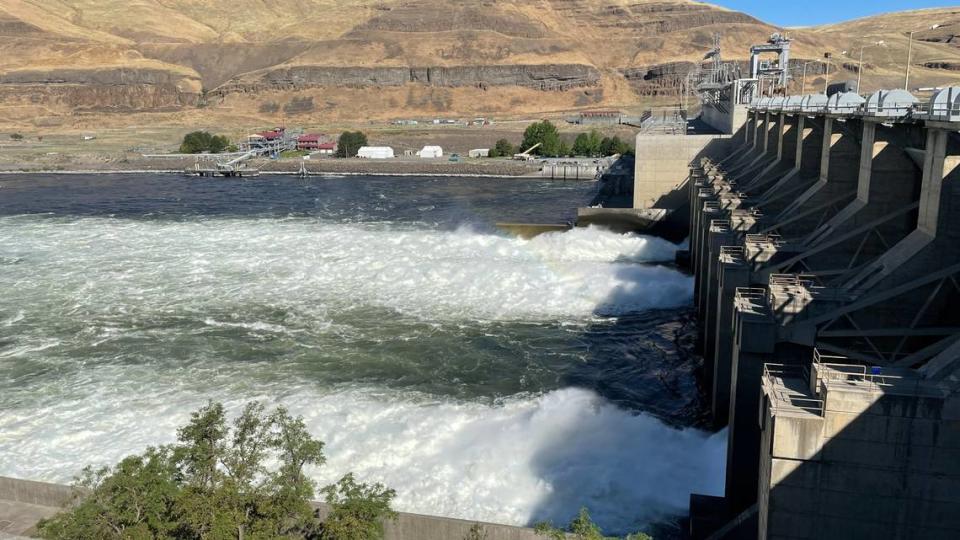Snake River ranked 4th most endangered in nation. Momentum builds to remove dams
The Snake River has been named the fourth most endangered river in the nation on an annual list compiled by American Rivers.
The reason? The four dams along the lower Snake River in Eastern Washington, located near the Tri-Cities to near the Idaho border.
The annual report by the nonprofit calls for the dams to be removed, but not immediately.
“... (It) is critical that the hydropower, transportation and irrigation services of the dams are replaced before dam removal can begin,” the report said.
The dams provide more than 1,000 megawatts of clean energy, or enough to power almost 1 million homes.

Much of the year, Bonneville Power Administration relies on the lower Snake River dams specifically to help meet peak demands for energy, according to the Tri-City Development Council (TRIDEC).
A recent analysis by the Washington Post found Washington state to have the second cleanest power in the nation, thanks mostly to its hydroelectric generation. Vermont was first with mostly nuclear and some hydro generation.
The dams also allow 50 to 60 million tons of cargo to be moved on the lower Snake River annually, including allowing farmers to export grain and other crops grown in interior parts of the United States to overseas markets.
The four lower Snake dams — Ice Harbor, Lower Monumental, Little Goose and Lower Granite — have some of the most advanced and successful fish passage systems in the world, according to TRIDEC.
It says fish headed downstream are surviving at rates similar to fish in undammed rivers.
But all species of salmon and steelhead populations in the Snake River Basin are now listed as threatened under the Endangered Species Act, says American Rivers.

The fish support the entire food web from the Rocky Mountains to the Pacific Ocean, including at least 135 species, from salmon to salamanders to endangered Southern Resident killer wells, says American Rivers.
“The dams turned (what) was once a free-flowing river into a series of still-water reservoirs that act as a bathtub left in the sun, contributing to increased water temperatures and exacerbating climate change through emissions of methane,” the American Rivers report said.
Temperatures in the lower Snake now consistently reach 70 degrees, a temperature that can be lethal for salmon and steelhead, in July and remain high throughout summer months, the report said.
“It’s clear that salmon cannot recover with the lower four Snake River dams in place,” said the report.
Replacing Snake dam benefits
There is no silver bullet to rebuild salmon and steelhead populations, said Kyle Smith with American Rivers.
Removing the dams would be “part of a broader strategy to recover salmon, not the be all, end all,” he said.
Habitat restoration, reintroducing species in the upper Columbia River and prevention of predation by fish, birds and sea mammals are needed, he said.

American Rivers wants Eastern Washington to be part of the conversation on replacing the benefits of the dams as momentum and a sense of inevitability on removal of the dams builds, Smith said.
“Participation from concerned communities and impacted industries is critical so the solutions we generate and settle on are inclusive and holistic rather than decided by someone in Seattle or Portland that isn’t aware of some of the intricacies or nuances of life in the Northwest,” he said.
American Rivers wants the dams hydropower replaced with renewables, such as solar backed up with battery storage.
Smith concedes that affordable battery storage, while promising, is not yet developed enough for use that would be needed in the Northwest to store energy for long periods. But it might be in a decade, he said.
Replacing the benefits of the dams would be expensive.
Rep. Mike Simpson, R-Idaho, floated a plan in 2021 that estimated it would take more than $30 billion to mitigate the damage to the region if the Snake dams were torn down.
While that proposal has not moved forward, the Washington state House and Senate proposed budget would pay for new studies to look at replacing the benefits of the dams.
Removing the dams is about more than saving salmon, Smith said.
“It is about creating infrastructure to carry the inland Northwest into the 22nd Century for the next 100 years,” he said.
Climate change is altering precipitation patterns to less snowfall in winter and more spring rain, he said. That changes the ability of hydrosystems to produce power at some times of peak demand, he said.
The Northwest needs to diversify its energy production and the federal government needs to modernize the electric grid, he said.
10 top endangered rivers
Rivers on the most endangered list for 2023 include:
Colorado River, Grand Canyon, for climate change and outdated water management.
Ohio River for pollution and climate change.
Pearl River, Miss., for dredging and dam construction.
Snake River, Wash., Oregon and Idaho, four federal dams.
Clark Fork River, Mont., for pulp mill pollution.
Eel River, Calif., for dams.
Lehigh River, Penn., for poorly planned development.
Chilkat and Klehini rivers, Alaska, for mining.
Rio Gallinas, N.M., for climate change and outdated forest and watershed management.
Okefenokee Swamp, Ga. and Fla., for mining.
The rivers were picked based on their significance to people and wildlife, the magnitude of the threat and whether the public could influence their futures.

